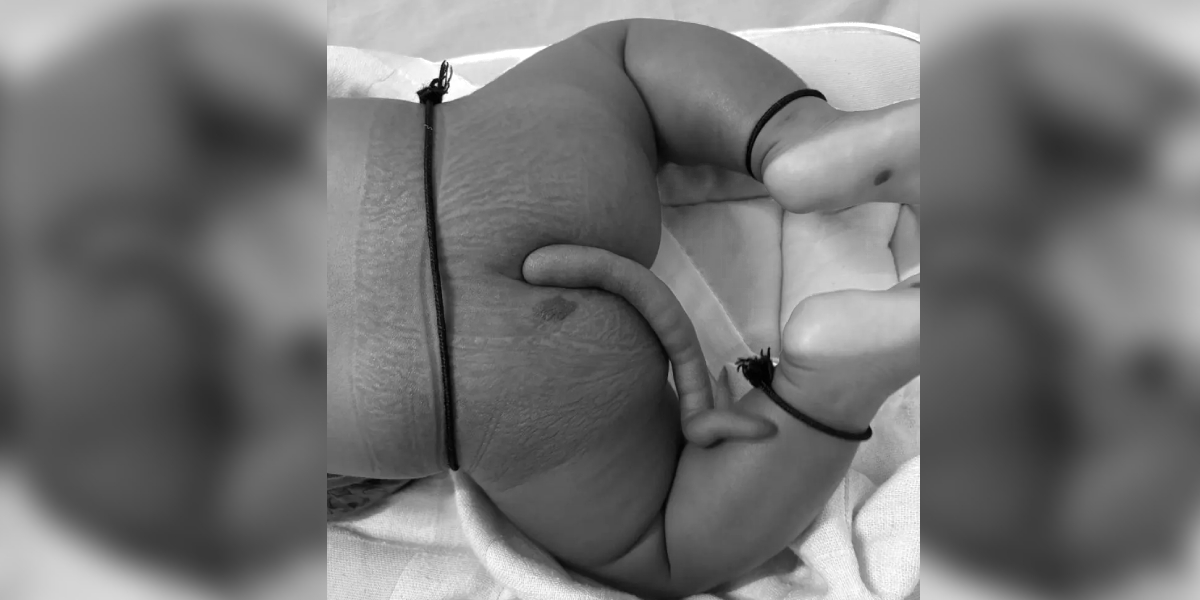The surgery, performed in January 2024, involved removing a 15 cm tail located in the lumbosacral region of the child.
Published Jul 17, 2024 | 7:00 AM ⚊ Updated Jul 17, 2024 | 7:00 AM

Doctors at the All India Institute of Medical Sciences (AIIMS) Bibinagar in Telangana have successfully performed a rare surgery to remove a tail from a three-month-old infant.
The surgery, performed in January 2024, involved removing a 15 cm tail located in the lumbosacral region of the child. Doctors waited seven months to monitor the child’s vitals and observe any aftereffects before declaring the procedure successful.
The doctors have now confirmed that the baby has no complications, and the operation is considered a success and the details of this rare surgery have been announced.
Dr. Shashank Panda, Head of the Department of Pediatric Surgery at AIIMS Bibinagar, stated that this is one of only about 40 such cases successfully operated on worldwide. The AIIMS Bibinagar case is the 41st, with the last known case reported from China.
Doctors said that the baby has associated occult spinal dysraphism from S1 to S5 vertebrae and anchored spinal cord syndrome with a risk of neurological deficit, requiring meticulous modification of surgical technique.
Occult spinal dysraphism (OSD) is a condition where there is an abnormal formation of the spine and spinal cord that is hidden or not immediately visible. In OSD, some parts of the spine don’t develop properly, which can lead to issues with the spinal cord and nerves.
Occult: This means hidden. The abnormalities are not obvious or visible on the surface of the skin.
Spinal Dysraphism: This term refers to a group of spinal abnormalities where the vertebrae (bones of the spine) don’t form completely.
Anchored Spinal Cord: The spinal cord is tethered or stuck, limiting its movement and possibly stretching the nerves as the child grows.
Neurological Deficits: Problems with nerve function, which can affect movement, sensation, and bladder or bowel control.
A team of three doctors at AIIMS Bibinagar performed the intricate surgery in January 2024, taking two and a half hours to remove the tail and reconstruct the child’s spinal canal. The procedure involved carefully dissecting and repairing a spina bifida connected to the spinal cord.
“The spinal cord was dissected meticulously with repair of Dura. The postoperative recovery was uneventful. After five days, the infant was discharged from the hospital with no neurological deficits. Six months post-surgery, the patient showed good wound healing and no complications. So, the operation was considered a success and the details of the rare surgery were announced,” said Dr Shashank Panda.
He said that the postoperative recovery was uneventful. Patient has no neurological deficit and good wound cosmesis at six months post surgery, at follow up. He made it clear that there was no chance for complications to develop to the boy in the future.
Dr. Panda emphasised that the successful surgery was a testament to the skilled team at AIIMS Bibinagar established in 2019 and the institute’s commitment to providing advanced medical care.
(Edited by Neena)
(South First is now on WhatsApp and Telegram)
